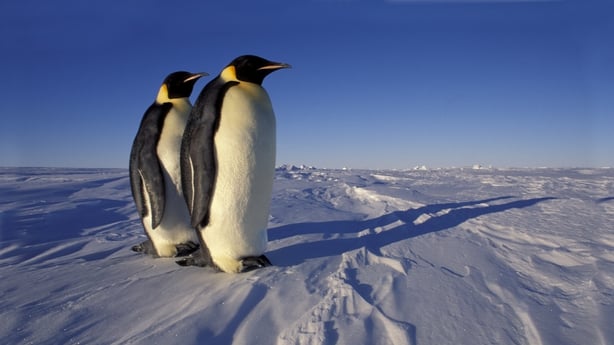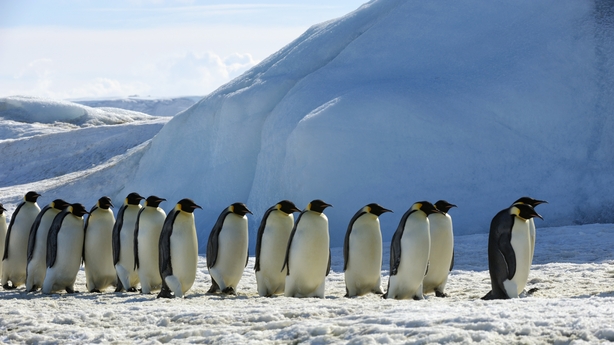Emperor penguin colonies experienced unprecedented breeding failure in a region of Antarctica where there was total sea ice loss last year.
The discovery supports predictions that over 90% of emperor penguin colonies will be quasi-extinct by the end of the century, based on current global warming trends.
Emperor penguins, the largest of the 17 species of penguins, breed and raise their young almost exclusively on sea ice during the depths of the Antarctic winter.
They trek up to 120 kilometres over ice to breeding colonies containing thousands of birds, where shared parenting and cooperation within the colony is key to survival.
However, a new scientific study from the British Antarctic Survey said there is high probability that no chicks had survived last year in four of the five known emperor penguin colonies in the central and eastern Bellingshausen Sea.
This was because the sea ice had melted well before chicks would have developed waterproof feathers.
Emperor penguins are dependent on stable sea ice that is firmly attached to the shore from April through to January.

These penguins lay eggs from May to June. The eggs hatch after 65 days. But chicks do not fledge until the following December and January.
Last year however, 100% of the sea ice in Antarctica's Bellingshausen Sea region melted in November.
The scientist say it is very unlikely any of the chicks survived as a result labelling it "a breeding failure at an unprecedented scale".
Today's report says about one-third of the 62 known emperor penguin colonies in Antarctica were affected by partial or total sea ice loss between 2018 and 2022.
Emperor penguins have previously responded to incidents of sea ice loss by moving to more stable sites the following year. But scientists say that this strategy won’t work if sea ice habitat across an entire region is affected.
Emperor penguin populations have never been subject to large scale hunting, habitat loss, overfishing or other man-made interactions or interference in the modern era.

However, over the past seven years, sea ice around Antarctica decreased significantly as the climate warmed.
As of 20 August 2023, the sea ice extent was 2.2 million square kilometres below the 1981-2022 median.
This missing area of sea ice is equivalent to an area 26 times the size if the island of Ireland.
Climate change is considered to be the only major factor influencing the long-term population change of the emperor penguin.
Dr Jeremy Wilkinson, a sea ice physicist at the British Antarctic Survey, said today’s report, which is published in the journal Communications Earth and Environment, dramatically reveals the connection between sea ice loss and ecosystem annihilation.







